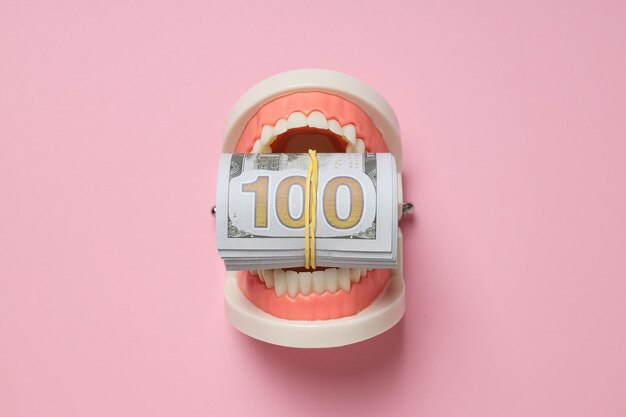How Much Do Partial Dentures Cost? Your Complete Guide to Pricing and Options
Partials for teeth might seem like a niche topic, but for individuals seeking solutions for missing teeth, understanding the ins and outs of partial dentures can be crucial. Let's dive deep into how much partial dentures cost, what factors influence their pricing, and how they can vary based on materials and options.
🦷 What Are Partial Dentures?
Partial dentures are removable dental appliances designed to replace one or more missing teeth. Unlike full dentures, which substitute all the teeth on the upper or lower arch, partials attach to existing teeth and fill in gaps. They're a popular choice for individuals who still have some of their natural teeth and want a functional and aesthetic solution.
Types of Partial Dentures
Acrylic Partial Dentures: These are typically the most affordable option. They consist of a pink acrylic base that resembles the gums, with acrylic teeth attached.
Cast Metal Partial Dentures: Known for durability, these dentures have a metal framework that provides support and strength.
Flexible Partial Dentures: Made from a flexible material, these dentures offer a more comfortable fit and a natural look.
Understanding the types of partials helps when discussing cost factors.
💰 Factors Influencing the Cost of Partial Dentures
The cost of partial dentures can vary significantly based on several factors:
Material: As previously mentioned, acrylic, metal, and flexible materials each have different price points.
Location: Dental costs can vary based on where you live. Urban areas may have higher prices compared to rural locations.
Dental Provider: Experienced providers might charge more, but they offer a level of expertise that could reduce the need for adjustments later.
Extent of Work Required: If additional dental work such as tooth extractions or adjustments is needed, this will affect the overall cost.
Average Cost Range
For those considering partial dentures, it's good to know the general cost range:
- Acrylic Partial Dentures: These can range from a few hundred to around a thousand dollars depending on customization.
- Cast Metal Partial Dentures: Generally more expensive, with prices often ranging from several hundred to a few thousand dollars.
- Flexible Partial Dentures: These typically fall in between, often closer to the upper range of acrylic dentures.
💡 Making Sense of Insurance and Payment Options
Many dental insurance plans cover a portion of the cost for partial dentures. However, specifics can drastically differ:
Coverage Percentage: Some plans might cover 50% of the cost, while others might have a capped amount.
Waiting Periods: Certain policies have waiting periods before major dental work, such as dentures, is covered.
If you don't have insurance, there are other ways to manage costs:
- Payment Plans: Many dental offices offer payment plans to spread out the cost over time.
- Discount Plans: Some providers participate in dental savings plans that provide discounts on various procedures.
🔍 Choosing the Right Partial Denture
Deciding on the right type of partial denture involves more than just looking at the price. Consider these aspects:
- Comfort: Flexible and metal options often offer better comfort compared to acrylic.
- Durability: Metal frameworks tend to be sturdier and may offer a longer lifespan.
- Aesthetics: Some patients prefer flexible partials for their ability to blend well with natural gums.
Consulting with Your Dentist
A discussion with your dentist can provide insights into:
- Pros and Cons of Each Type: They can explain how each option would work for your specific dental structure.
- Customization Needs: Depending upon your situation, there might be additional customizations required, impacting the final cost.
🛠️ Care and Maintenance of Partial Dentures
Once you have your partial dentures, proper care is vital to maintain their appearance and functionality:
Daily Cleaning: Use a denture brush or ultra-soft toothbrush to clean your dentures daily.
Avoid Certain Products: Harsh toothpaste or bleaching agents can damage dentures over time.
Regular Check-Ups: Follow up with your dentist to ensure a proper fit and make any necessary adjustments.
📊 Summary of Key Points
Here's a quick breakdown of the key points to remember:
- Types of Partials: Acrylic (affordable), Cast Metal (durable), Flexible (comfortable).
- Cost Influences: Material, location, provider experience, any additional required dental work.
- Insurance Insights: Review your plan for coverage percentages and waiting periods.
- Comfort and Function: Prioritize flexibility, durability, and how the aesthetic aligns with your needs.
- Maintenance: Proper cleaning and care extend the lifespan of your dentures.
🤔 Conclusion Insight
Deciding on partial dentures doesn't have to be overwhelming. Understanding the types, costs, insurance factors, and maintenance can empower you to make informed choices that suit your dental and financial needs. By consulting with dental professionals, staying informed about your options, and considering your unique requirements, you can optimize your experience with partial dentures and enhance your quality of life.

Related Topics
- a Bridge For Teeth
- a Denture Plan That You Can Pay Monthly Payments
- Are Dentures Covered By Insurance
- Are Dentures Covered By Medicare
- Are Dentures Uncomfortable
- Are Permanent Dentures Thinner Than Temporary Dentures
- Are Snap-in Dentures Covered By Insurance
- Are There Plastic Dental Partials With Metal
- Can a Tooth Be Added To a Valplast Denture
- Can Dogs Get Dentures